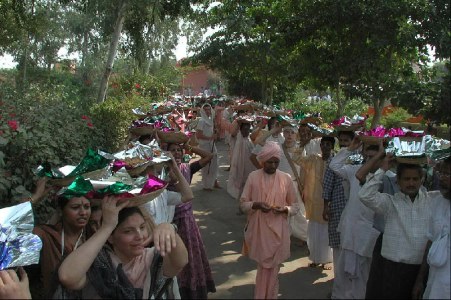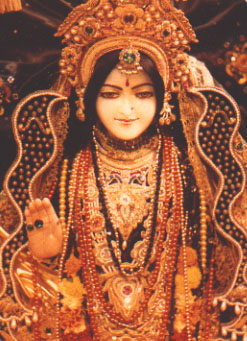samcdkey said:I was being simplistic here, but aren't the Mahadevas called as gods under Brahman?
And I believe there are differences in thought based on the schools.
In Advaita Vedanta, they differentiate between Saguna Brahman and Nirguna Brahman.
In Dvaita Vedanta, they consider the world to be Saguna Brahman. This is probably the one you refer to.
The Trimurti, (Brahma, Vishnu, Shiva) though are believed to be representatives of different aspects of Brahman or the Parabrahman.
Parabrahman is superior to all of them. Although Visnu is said to be equal, or a direct incarnation. God is acting through everyone and everything, even as the demons, the wicked, the cruel, however when he incarnates as himself, it is him, himself, just as a dreaming person dreaming that they are themself are indeed themself.
SB 2.9.33: Brahmā, it is I, the Personality of Godhead, who was existing before the creation, when there was nothing but Myself. Nor was there the material nature, the cause of this creation. That which you see now is also I, the Personality of Godhead, and after annihilation what remains will also be I, the Personality of Godhead.
"The transcendental Personality of Godhead is indirectly associated with the three modes of material
nature, namely passion, goodness and ignorance, and just for the material world's creation,
maintenance and destruction He accepts the three qualitative forms of Brahma, Visnu and Siva. Of
these three, all human beings can derive ultimate benefit from Visnu, the form of the quality of
goodness." (SB 1.2.23)
SB 2.6.32: By His will, I [Brahma] create, Lord Śiva destroys, and He Himself, in His eternal form as the Personality of Godhead, maintains everything. He is the powerful controller of these three energies.
SB 2.6.43-45: I myself [Brahmā], Lord Śiva, Lord Viṣṇu, great generators of living beings like Dakṣa and Prajāpati, yourselves [Nārada and the Kumāras], heavenly demigods like Indra and Candra, the leaders of the Bhūrloka planets, the leaders of the earthly planets, the leaders of the lower planets, the leaders of the Gandharva planets, the leaders of the Vidyādhara planets, the leaders of the Cāraṇaloka planets, the leaders of the Yakṣas, Rakṣas and Uragas, the great sages, the great demons, the great atheists and the great spacemen, as well as the dead bodies, evil spirits, satans, jinn, kūṣmāṇḍas, great aquatics, great beasts and great birds, etc. — in other words, anything and everything which is exceptionally possessed of power, opulence, mental and perceptual dexterity, strength, forgiveness, beauty, modesty, opulence, and breeding, whether in form or formless — may appear to be the specific truth and the form of the Lord, but actually they are not so. They are only a fragment of the transcendental potency of the Lord.








